California drought: Drilling deeper in the hunt for water
- Published
The BBC's Alastair Leithead looks at the impact of California's worst drought in more than a century.
Taps are running dry in California's Central Valley as the worst drought in more than a century forces farmers to drill ever deeper underground for water.
In the rush to grab groundwater for agriculture, shallow household wells are drying up and those who can't afford to dig deeper are facing a future without running water.
Working out of a warehouse, Elva Beltran is handing out bottled drinking water and helping families in the town of Porterville, where hundreds of people have lost their water supply.
"Ten or 12 new families are coming in every day - some have been without for three or four months," say Beltran. She's the director of the Porterville Area Coordinating Council, which is a local government agency run by volunteers.
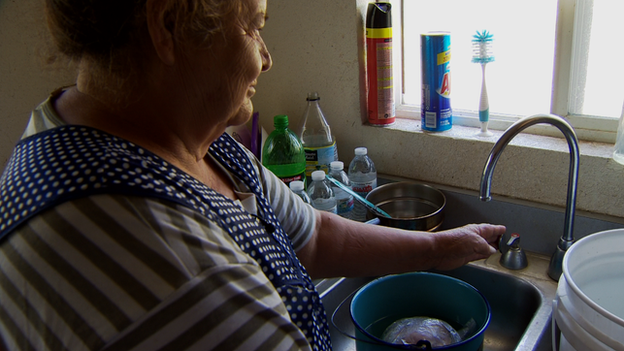
Hundreds of residents rely on bottled water after their taps ran dry
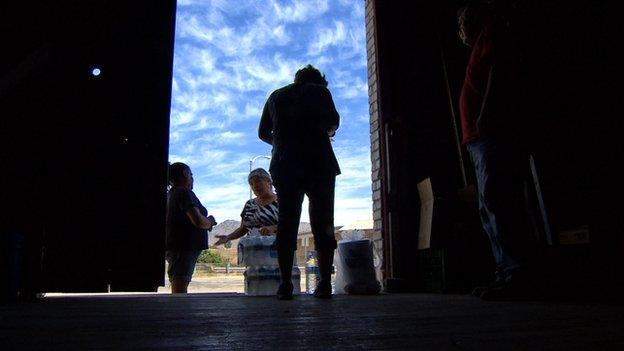
Several local charities banded together to hand out water to people whose wells have dried up
Hundreds of groundwater aquifers prop up California's Central Valley - one of the most productive agricultural areas on the planet - but nobody knows how much water they contain, or how much is being taken out.
For many years rainfall, reservoirs and irrigation canals have allowed this sunny expanse in California to produce half of America's fruit, nuts and vegetables.
But after three extremely dry years, the farmers are turning to groundwater to keep their crops and their precious trees alive.
There's a water-rush as drilling companies are burrowing ever deeper - and there's no restriction on how many wells can be sunk underground.
"Think about the groundwater supply in the Central Valley as a giant milkshake glass, and each well as the equivalent of a straw in the glass," said Robert Glennon a professor at the University of Arizona College of Law.
"What California law permits is a limitless number of straws in the glass, and eventually all the water is sucked out. You are seeing that as the water table is dropping precipitously."

Workers hired by a farmer drill a new well for his crops
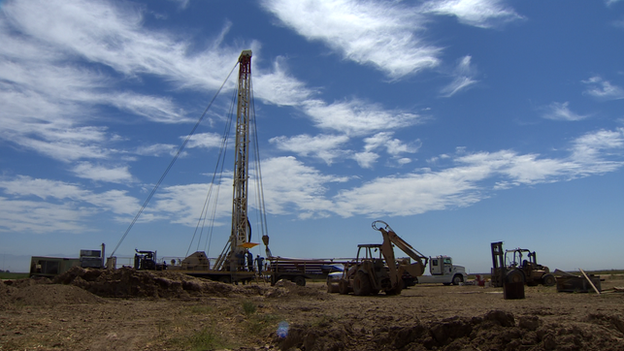
Business is booming for the drilling companies
In some parts of the Central Valley, the water level has dropped more than 20m in less than a year, but the most compelling evidence for the loss of groundwater comes from space.
Two identical Nasa satellites orbiting the earth 220km apart can measure tiny changes in its gravitational field - flooding increases the pull, and the loss of water from the land allows the satellites to drift slightly further into space.
"We can see the groundwater is being depleted quite rapidly in the Central Valley," said Jay Famiglietti, senior water scientist at the Nasa Jet Propulsion Laboratory in southern California.
"During these periods of drought there are excessive amounts of groundwater depletion.
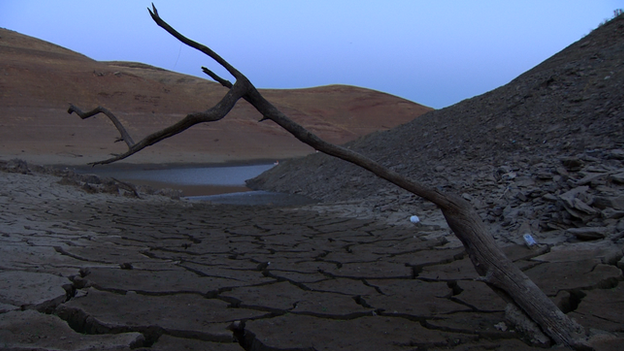
The historic drought has scorched the earth in the Central Valley
"There is a very, very heavy reliance on groundwater - we are seeing the signs of that on the ground through subsidence, through wells going dry, through people having to fold up their farming activities."
He's found that the wettest period of 2014 is drier than the driest periods of every previous recorded year.
Another report estimates the western US has lost 63 tn gallons of water in 18 months - and 80% of California's water is used for agriculture.
A large mechanical hand grabs and vigorously shakes the trunk of a tree until it rains almonds.
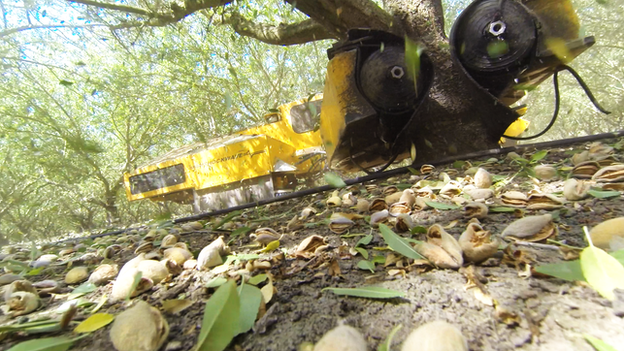
Almonds fall from the tree after a shaker knocks them loose. California produces 80% of the world's almonds.
Other machines drive up and down the long, straight groves of trees, brushing then sucking up the nut harvest for cracking, sorting and packing.
Only certain parts of the world can grow almonds, which are a high-value crop, and California's Central Valley is one of them - but the nuts need a lot of water.
More are being planted, and unlike hay or cereal fields, farmers can't leave them fallow in times of drought - they need watering for every one of the 20 or 30 years a tree is productive.
"It is not sustainable," said Dave Phippen who grows, sorts, packs and ships almonds around the world.
"We know we are extracting more groundwater than can be replenished, but when a grower can't have deliveries of surface water, his only option to keep his orchard is to use his groundwater wells."
He uses drip irrigation and says he uses water far more efficiently than his grandfather did.

Water in California's reservoirs is well below half the usual levels
This year, for the first time, farmers in many parts of the Central Valley have received no rainwater or runoff allocation for their crops from the water district.
Dave Phippen blames population increases and believes more reservoirs are the solution - to capture more rainwater in times of plenty - as long as this drought is just the usual cyclical weather pattern.
"If this drought situation is the new normal we are going to have to completely re-think how much food we can grow - and a lot of people depend on California for growing food," he said.
Photos by the BBC's Jack Garland. Data visualisation by David Botti.
- Published2 July 2014
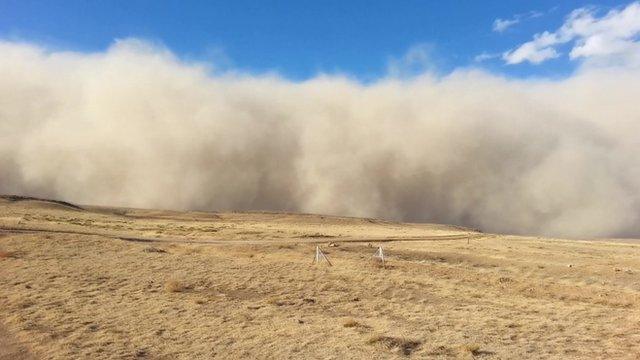
- Published19 February 2014

- Published3 August 2012
